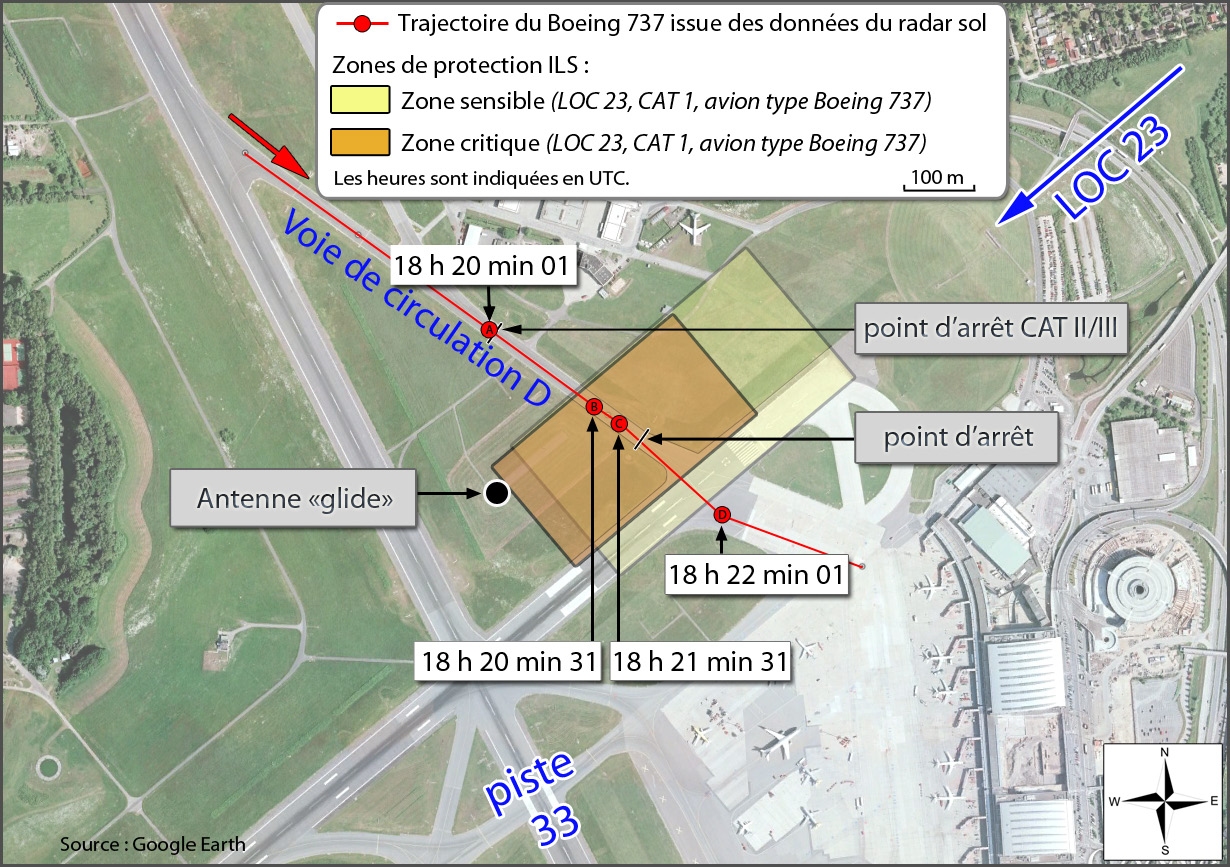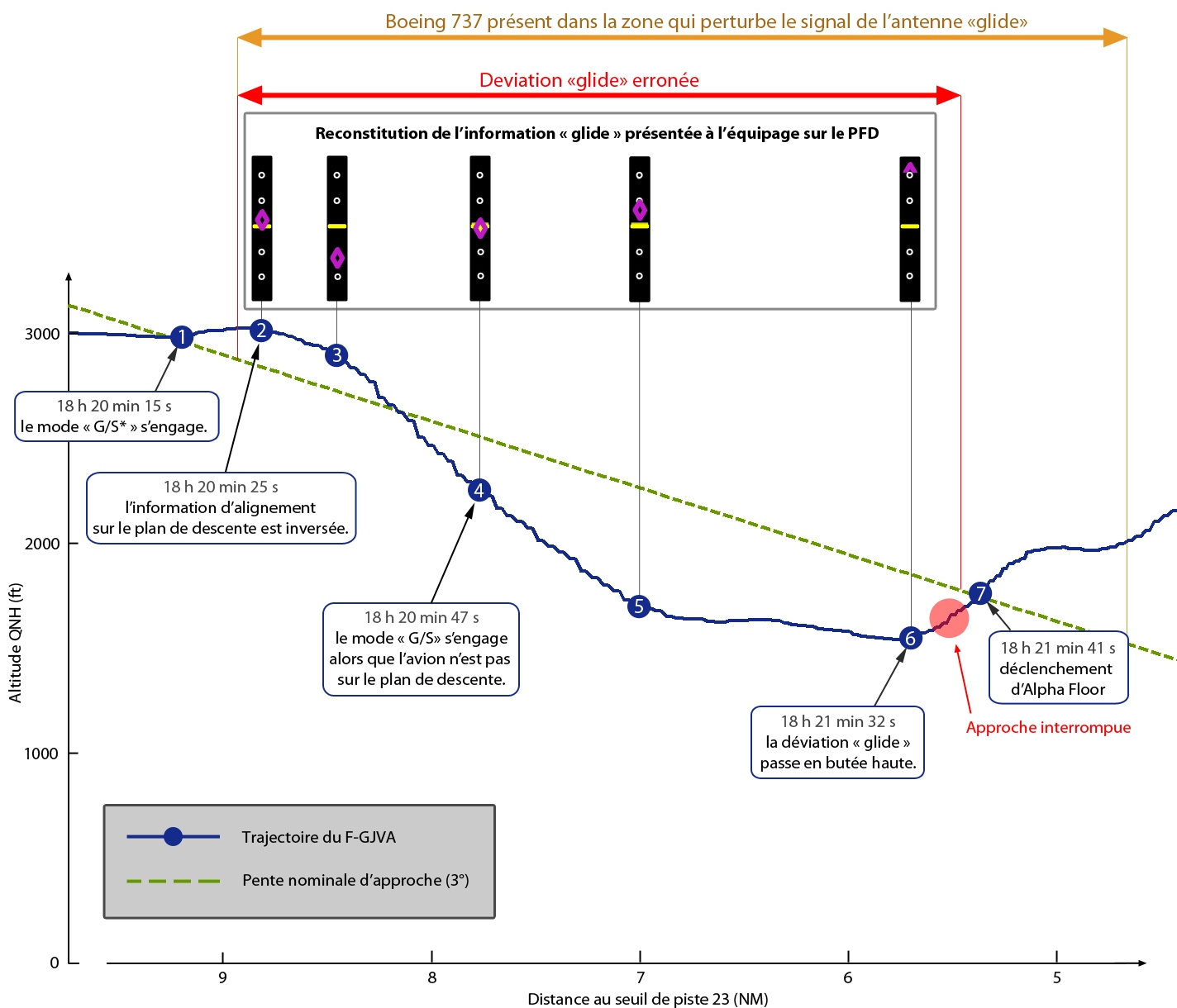
ASN Wikibase Occurrence # 174122
This information is added by users of ASN. Neither ASN nor the Flight Safety Foundation are responsible for the completeness or correctness of this information.
If you feel this information is incomplete or incorrect, you can submit corrected information.
| Date: | Wednesday 28 March 2012 |
| Time: | 20:20 |
| Type: |  Airbus A320-211 |
| Owner/operator: | Air France |
| Registration: | F-GJVA |
| MSN: | 144 |
| Year of manufacture: | 1990 |
| Engine model: | CFMI CFM56-5A1 |
| Fatalities: | Fatalities: 0 / Occupants: |
| Aircraft damage: | None |
| Category: | Incident |
| Location: | Hamburg-Fuhlsbüttel Airport (HAM/EDDH) -
 Germany Germany
|
| Phase: | Approach |
| Nature: | Passenger - Scheduled |
| Departure airport: | Paris-Charles de Gaulle Airport (CDG/LFPG) |
| Hamburg-Fuhlsbüttel Airport (HAM/EDDH) | |
| Investigating agency: | BEA |
| Confidence Rating: |
An Airbus A320-211 of Air France operated a passenger service, flight AF2510, from Paris-CDG, France to Hamburg, Germany. The captain was Pilot Flying.
While the aircraft was descending towards Hamburg, there was a change in runway utilization. Runway 33 was being used for takeoffs and landings until runway 23 was opened for landings. The A320 was the second aircraft using runway 23 for landing since the change. After intercepting the runway 23 ILS glideslope, the Pilot Flying reprogrammed the FMGS (Flight Management and Guidance System) for this approach.
At the same time Air Berlin flight AB6660, a Boeing 737-700 (D-AHXA) had just landed on runway 33. The 737 taxied towards the terminal building but had to cross runway 23 to get there. Since the A320 was on final approach, the flight crew of the 737 was instructed to hold short on taxiway D.
From that moment on the Primary Flight Display (PFD) of the A320 began displaying erroneous glidepath information. The aircraft descended below the glideslope while the PFD showed the airplane to be on the glideslope. The A320 descended even further below the glideslope, yet the PFD showed it to be almost one dot above the glideslope.
The first officer suggested to abort the approach, which was accepted by the captain. The captain raised the nose but did not change the throttle setting. The speed decreased to 143 knots and the "Speed, speed, speed" aural alarm activated. The captain progressively moved the throttles to Maximum Continuous Thrust (MCT).
Meanwhile the Alpha Floor protection activated, moving the throttles to TOGA (Takeoff Go Around). The speed had dropped to a 121 knots. Subsequently the captain lowered the nose and allowed the airplane to pick up speed. The flight circled and made a safe approach and landing on runway 23.
An investigation revealed that the Boeing 737 that was holding short on the taxiway was positioned in an area that was considered a critical zone near the Glide Slope antenna. The aircraft caused a disturbance in the glideslope signal, leading to erroneous information being displayed on the PFD of the approaching aircraft.
Accident investigation:
 |
|
Sources:
http://www.bea.aero/docspa/2012/f-va120328/pdf/f-va120328.pdf
Images:

Hamburg airport map showing critical zone (BEA)

Approach profile (BEA)
Revision history:
| Date/time | Contributor | Updates |
|---|---|---|
| 25-Feb-2015 20:05 | harro | Added |
| 25-Feb-2015 20:11 | harro | Updated [Photo, ] |
| 25-Feb-2015 20:11 | harro | Updated [Photo, ] |
| 25-Feb-2015 20:18 | harro | Updated [Narrative] |
| 25-Feb-2015 20:43 | harro | Updated [Narrative] |
Corrections or additions? ... Edit this accident description
The Aviation Safety Network is an exclusive service provided by:


 ©2024 Flight Safety Foundation
©2024 Flight Safety Foundation